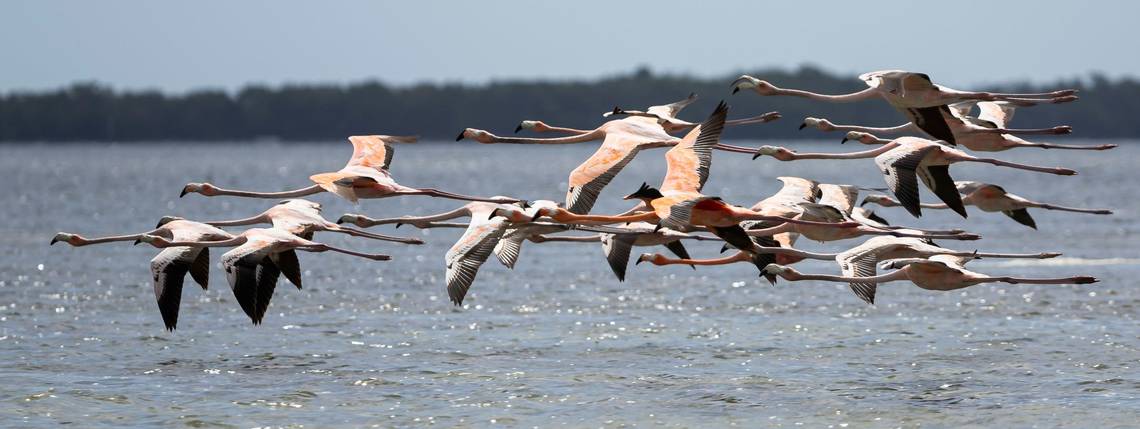For the last century, flamingos in Florida were more likely to be spotted on T-shirts and cups in a souvenir shop than flapping around in the wild.
Then last summer, a flock of the rare and beautiful birds — a group is fittingly known as a “flamboyance” of flamingos — was blown to Florida on the fierce winds of Hurricane Idalia.
Eight months later, they remain on the shores of Florida Bay, delighting scientists and inspiring hope that this could be the year they stick around for good. May is the beginning of their nesting season, and researchers are crossing their fingers that the large, apparently healthy population could start popping out fledglings on Florida soil for the first time in a century.
“I am guardedly optimistic,” said Jerry Lorenz, state research director of Audubon Florida. “I can only say I hope so.”
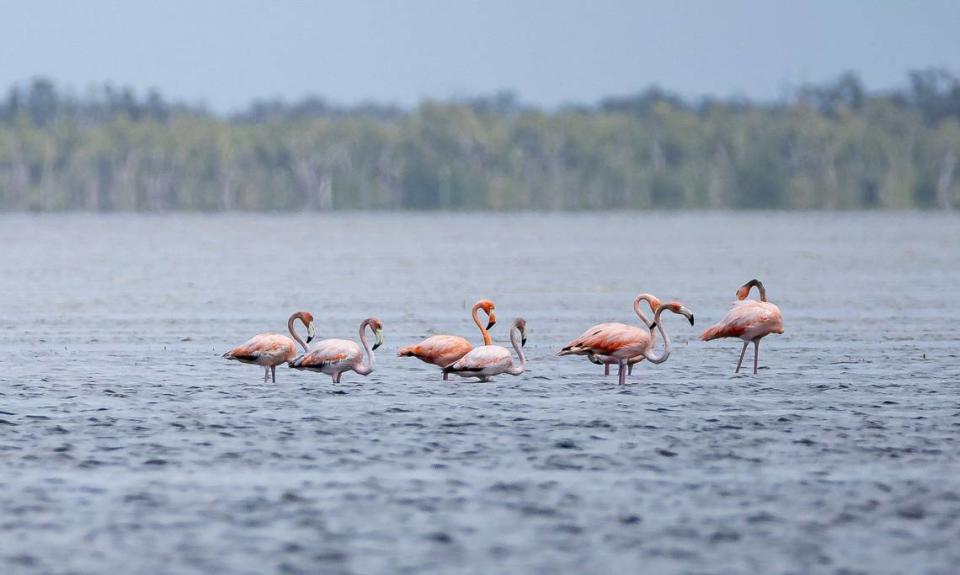
The stately, pink birds have been occasional visitors to the Sunshine State in recent decades, usually in small groups. A few have found semi-permanent winter homes in places like Merritt Island, Tampa Bay and a manmade marsh used to clean polluted water from farms in Palm Beach County.
But, like the snowbirds that famously occupy the condos of this state, they rarely stick around through the summer months.
Lori Oberhofer, a wildlife biologist with Everglades National Park, called it a “good sign” that the flamingos have stuck around so long.
“The species is recovering thanks to protection in the Caribbean and persistence of these recent birds here may be an indicator that flamingos are looking to settle back into South Florida, including Everglades National Park,” she said.
Once it was clear the population made it over the hump of a particularly wet and cool winter, Audubon asked birders across the state to share sightings of the coral-colored birds in a first-ever census of the population in February. The results aren’t available yet, but “hundreds” of sightings were reported in the one-week window, including a flock of around 75 in Florida Bay.
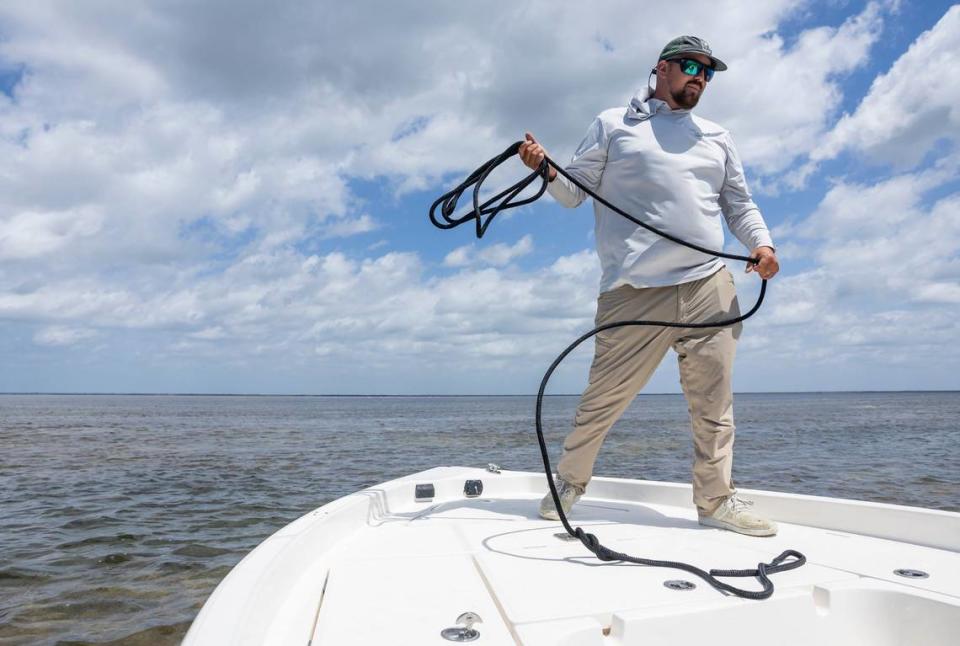

Jon-Paul Haydocy, a field biologist for Florida Audubon, said the only flamingo he regularly saw in Florida Bay for the last few years was one of the iconic Florida lawn ornaments, painted with a dab of white and used by Audubon researchers as a lure for populations of roseate spoonbills, the other pink bird that calls the Everglades home.
“I remember a few years ago just seeing a single flamingo was a big deal,” he said. “Now for it to be a common occurrence that we can find forty to fifty almost at will is really remarkable.”
On his skiff in Florida Bay, surveying a flock of 40 flamingos, Haydocy called the return of the birds a sign that Everglades restoration is working.
“If we got nesting flamingos it would be absolutely historic and proof that we’re getting it right in the Florida Everglades,” he said.
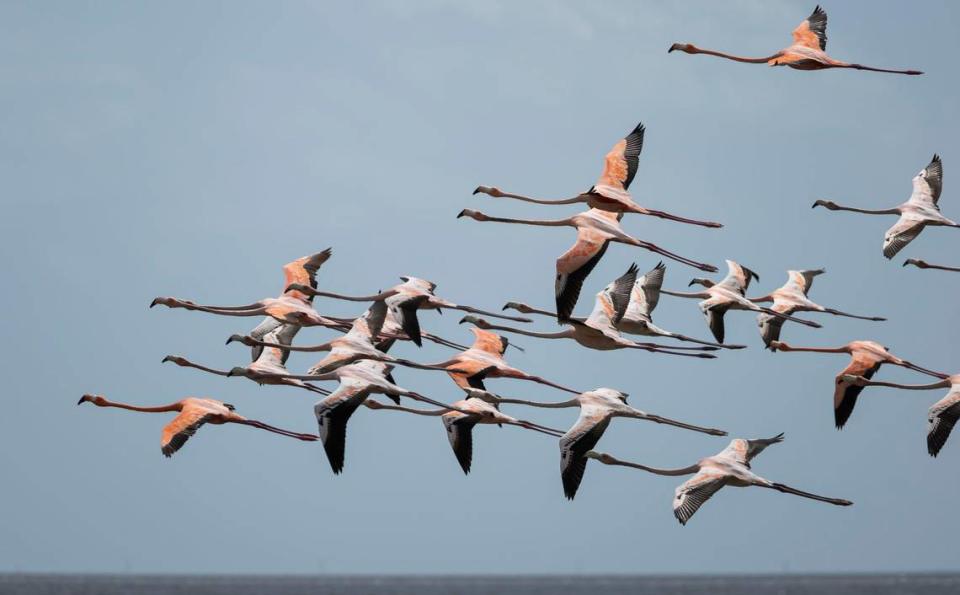

Scientists with the park service and the South Florida Water Management District will conduct aerial surveys of wading birds over the next few months and plan to keep a keen eye out for their distinctive nests — volcano-shaped piles of mud.
Despite their elegant reputation, flamingos apparently really love mud.
A flock drawing the eyes of scientists, birders and anglers alike has spent the winter on the mud shoals and sea grass flats of Florida Bay. On a sunny April day, they could be spotted — at a distance — shuffling through the squelchy, blue-gray mud and running their curved beaks through it.
Flamingo beaks are like the mouths of baleen whales, designed to filter through the mud and pick out the good stuff: algae, krill and tiny crabs and fish. Early studies of the stomach contents of flamingos found them “50 to 80% full of mud,” Lorenz said.
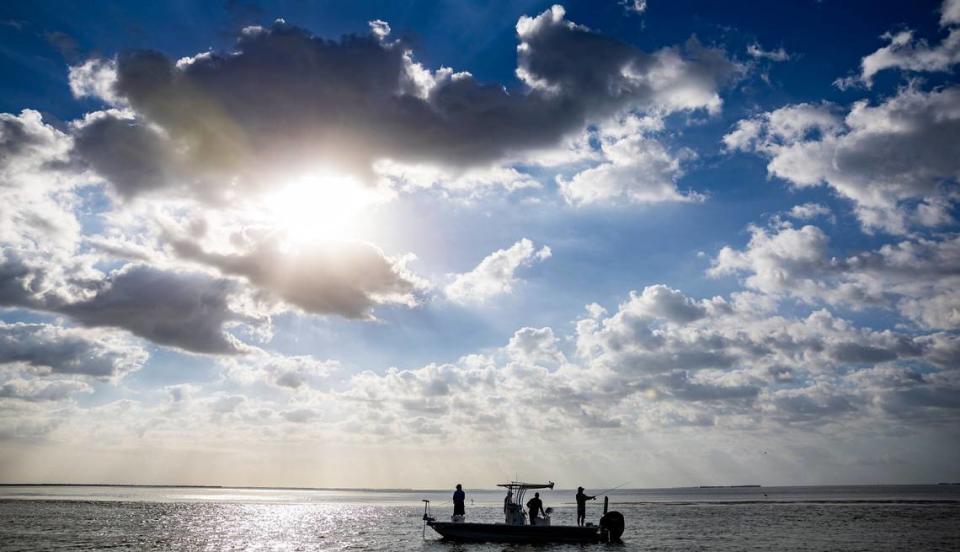

The squishy mud that gives wading birds the otherworldly appearance of walking on water in the shallows of Florida Bay also gives the flamingos a measure of protection from human contact. It’s tough to get close enough to spot the shy birds without running a boat aground or getting trapped waist-deep in the muck.
And yet, earlier this week some anglers were protective enough of the pink newcomers to warn away anyone who drew near.
“Don’t get too close. They were here 15 years ago, until guys got too close and scared them off. Took them 15 years to come back,” a man warned reporters on Tuesday. “They don’t like people.”
It’s not hard to understand why locals are so protective of the apparently flourishing flock. Until recently, scientists officially categorized flamingos as a non-native species. Any stragglers found elsewhere were presumed escapees from the Hialeah Race Track, which has maintained a flock for years.
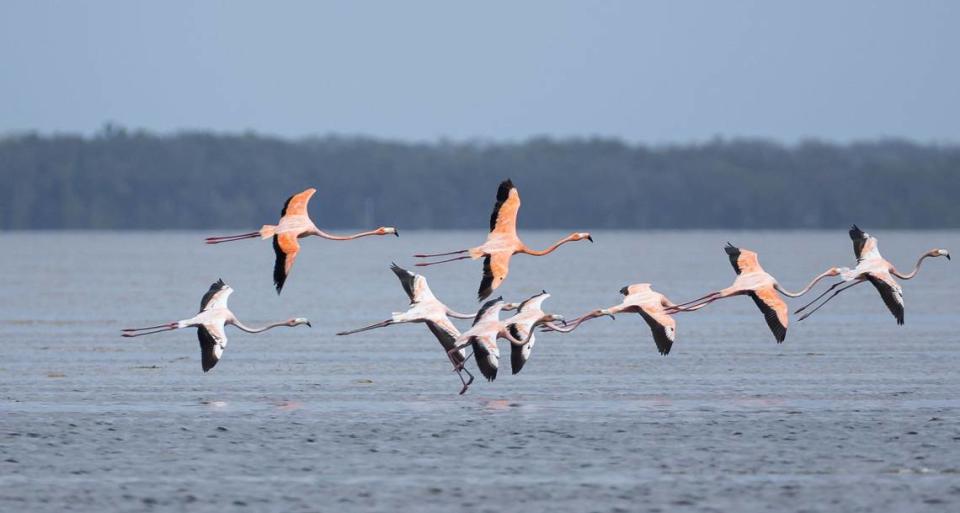

The birds spotted here in the thousands in the early 1900s and painted by John James Audubon himself were considered wiped out by plume hunters and the subsequent drainage and destruction of the Everglades. Audubon’s lead biologist even declared in 1939 that there was no evidence flamingos had ever nested here.
Then, in 2015, Zoo Miami scientist Frank Ridgely got a call. There was a flamingo flapping around the Boca Chica Naval Air Station, and officials wanted it gone, pronto.
“He did not like these birds flying around his billion-dollar aircraft,” Lorenz joked.
Researchers captured the bird, dubbed Conchy, and released it with a tracker. For the next two years, it remained in Florida Bay, where scientists also spotted another pair of banded birds, these ones from the Yucatan peninsula.


That proof, plus a treasure trove of DNA evidence, written accounts and even illicitly-traded flamingo eggs, resulted in a scientific paper published in 2018 that solidified the state of Florida’s flamingos as natives— not tourists.
And if the flamboyance taking up residence in Florida Bay decides to raise the next generation on the newly restored grass flats, it would be an even greater victory for those scientists, said Haydocy.
“Something has to be right for them to stay this long,” he said.
